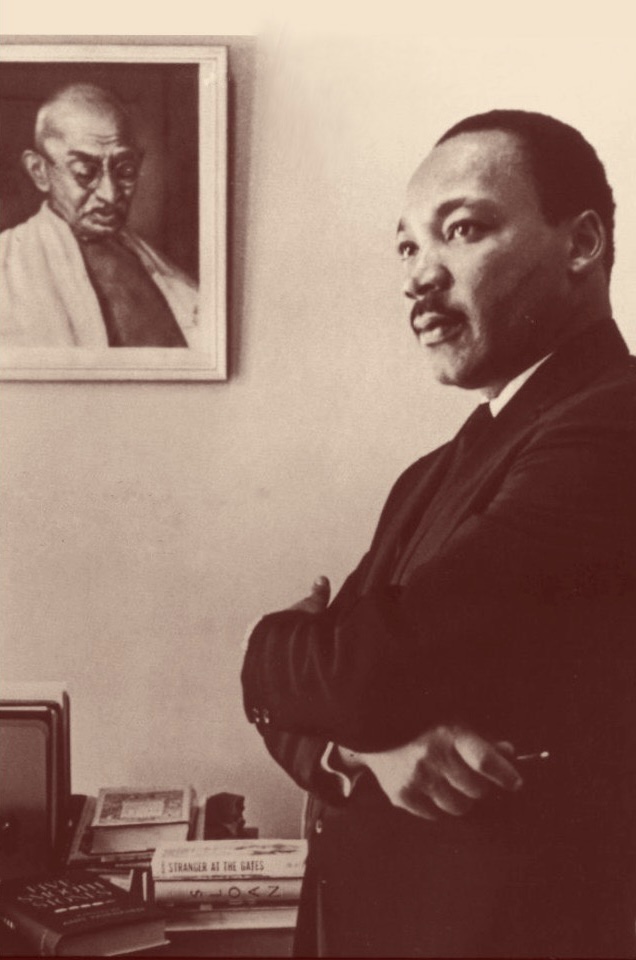
Black Americans and South Asians: A Long History of Collaboration
thepurejustice 0 Comments Uncategorized
Black History month is a special time for all Americans but particularly for us South Asians. Most of America may not be aware of the ties that bind, but Black Americans and South Asians have a long history of working together to fight for civil rights and discrimination. It is well-known to many people that Dr. King borrowed many of his nonviolent methods of protest from Mahatma Gandhi, but not so well-known are the true stories of other Indian and Black freedom fighters and civil rights leaders who worked together to bring about change.
There was a long-standing interest in India’s struggle for Independence from England by Black civil rights leaders. In 1942, there was a robust anti-colonial movement spearheaded by Mahatma Gandhi to remove the British from India. It may come as a surprise to many Americans, but the Black press covered this news widely and looked to the Indians fighting for their freedom as similar to Black American struggle for civil rights. In Colored Cosmopolitanism, Nico Slate wrote: While most American newspapers closely covered the outbreak of civil disobedience in India, it was the African American press that recognized the racial framework in which Gandhi, Nehru, and other leading Indian figures positioned their struggle. Black interest in India had risen dramatically during the noncooperation and civil disobedience movements, and it peaked again in the wake of the Quit India declaration. On September 26, over eighty Black intellectuals sent President Roosevelt a joint letter encouraging him to take decisive action to resolve the crisis in India. That same day, sociologist and Pittsburgh Courier columnist Horace Cayton told readers of The Nation “it may seem odd to hear India discussed in pool rooms in South State Street in Chicago, but India and the possibility of the Indians obtaining their freedom from England by any means has captured the imagination of the American Negro.” In October the Courier publish the results of a poll in which 87.8% of ten thousand black respondents answered yes to the question, “Do you believe that India should contend for her rights and her liberty now?”
Other Black civil rights activists and literati such as Langston Hughes wrote poems about India’s freedom and Bayard Rustin who was the lead organizer of the 1963 March on Washington organized the Free India committee while in jail for protests. W.E.B. Dubois corresponded regularly with Nehru, Tagore and other Indian civil rights activists and exchanged information and encouragement for each other. Both Black and Indian leaders viewed the struggle for civil rights in the United States and India’s freedom from British as the same problem viewed through different lenses.
Indian politicians such as Prime Minister Nehru spoke up in support of freeing Paul Robeson and other civil rights leaders who were jailed during the 1960’s. Other people who spoke up and assisted Black civil rights were individuals such as Professor Ram Manohar Lohia who was also a member of India’s Parliament and taught at Fisk University in 1951. He travelled back and forth between the United States and India and was arrested in 1964 in Mississippi for violating Jim Crow laws by trying to eat at a cafeteria as a person of color. While he was released almost immediately due to his diplomatic status, and there was a formal apology from the U.S. State Department, Lohia refused to accept the apology and insisted that racial segregation must end and it was a moral issue not a political one.
During Black History month in the United States, it is worth remembering and knowing the commonalities between Indians and Blacks who fought together for common dreams and goals: of fighting for equality with White America or with the White Colonizer. Now, more than ever with the ever increasing threat of White supremacist violence and intimidation present in our communities , the South Asian community of Indians in the United States must strengthen and improve ties between our community and the Black community for the equitable and continuous striving of equality and fairness in the United States.
Written By: Gautam Nayer
Sources:
https://blackdesisecrethistory.org/